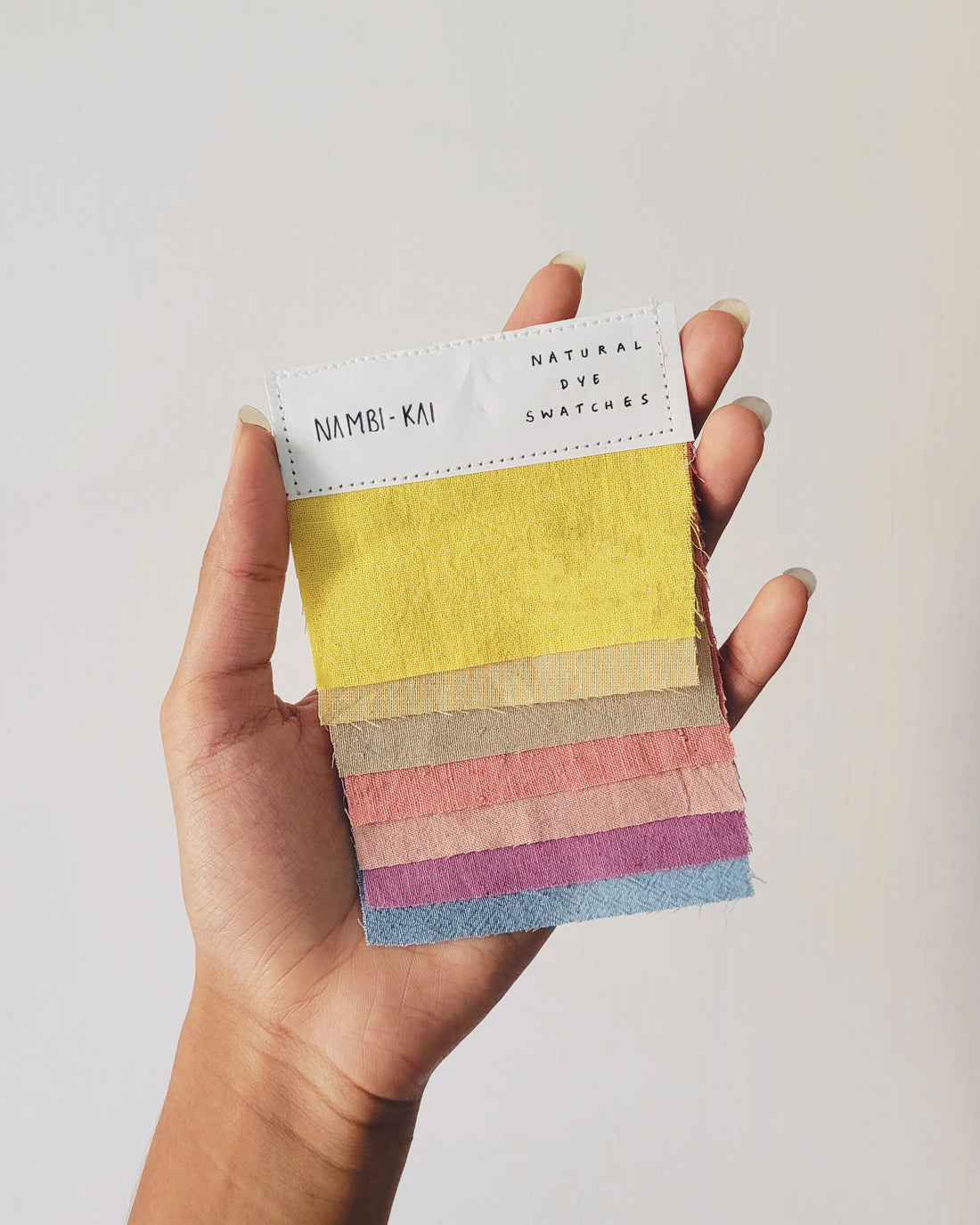
Know more about Mordants!
Share
One of the most alluring aspects of the dyer's studio is the aromatic steam that rises into the air from the dye pot, especially when working on a summer morning. Working with natural dyestuff is such a sensual experience that many artisans do it for the sheer pleasure of making the vat. The infused colours of the immersed materials are divinely eye-catching - as is the entire process.
The process is lengthy and tedious but the end results are always cheerful and pleasing. It starts with mordanting the scoured fabrics before dipping them in the dye bath. You must be wondering what exactly are mordants? Mordants are type of fixatives which enhance the light and wash fastness of the dyed fabrics. At our studio, we try to avoid mordants that are toxic to the environment and have to be disposed as hazardous waste. Alum water is best suited as a fixative material. Alum known as phitkiri (Hindi); pati-karam, padigaram (Tamil) is a colourless, clear, odourless, crystalline mineral salt or granular powder with a sweetish astringent flavour. Apart from being fixative, it has lot of potential uses – for infections, cooling effects, obesity, purification, platelets, tumour, therapeutic uses etc. Along with alum we also use myrobalan (kadukkai), a natural mordant due to high its tannin content.
Oh! wait, now you must be clueless about what tannins are?
Let us help you understand a few things about tannins. Tannic acid is used to mordant cellulose fibres such as cotton. Many dyestuffs contain tannin (black oak, myrobalan, pomegranate, cutch, fustic, etc) and do not need an additional tannin mordant. Tannins can be clear or they can add colour to the fibre. This is a consideration when selecting a tannin. Myrobalan can be classed as both a mordant and a dye, giving a light buttery yellow when applied.
In natural dyeing each color carries subtle and harmonious shades.
Cutch - shades of brown
Myrobalan - shades of yellow and gives out more vibrant yellows when added with turmeric.
Sappan wood - hues such as red, pink, purple and orange depending on the pH.
Lac – crimsons, pinks, purples and burgundy reds using an alum mordant.
Ratanjot – shades of grey, lavender and purple
Madder – turkey reds, mulberry, orange-red, terracotta.
Pomegranate peel – golden yellows, greens, greys and blacks
Indigo – all shades of Indigo blue
Kassim - black/grey
Grab a piece of naturally coloured clothing for yourself and take in the tranquillity.
